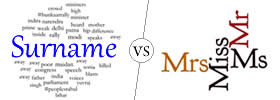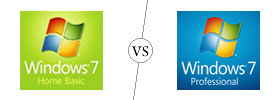Difference between MDF and Marine Plywood
Key difference: MDF stands for medium-density fiberboard. It is an engineered wood product. It is created by breaking down wood residuals into wood fibers. These wood fibers are then combined with wax and a resin binder. The mixture is then flattened and made into panels by applying high temperature and pressure. Marine plywood is a type of special-purpose plywood commonly used in moist and humid conditions. Plywood is a type of manufactured wood panel. It is frequently used in the construction of docks and boats.
 MDF stands for medium-density fiberboard. It is an engineered wood product. It is created by breaking down wood residuals into wood fibers. These wood fibers are then combined with wax and a resin binder. The mixture is then flattened and made into panels by applying high temperature and pressure.
MDF stands for medium-density fiberboard. It is an engineered wood product. It is created by breaking down wood residuals into wood fibers. These wood fibers are then combined with wax and a resin binder. The mixture is then flattened and made into panels by applying high temperature and pressure.
MDF is quite similar to traditional plywood, but has a number of advantages over it as well. Like plywood, MDF can be used as a building material. MDF’s advantage is that as it is made up of separated fibers. This allows it to be denser than plywood, as well as stronger and denser than particle board.
Furthermore, MDF does not contain knots or rings like natural wood. This means that the MDF is more uniform in nature and is easier to cut and work with than traditional wood. MDF has a hard, flat, smooth surface that makes it ideal for veneering. MDF can also be glued, doweled or laminated. However, MDF is similar to wood in the manner that it has the possibility of splitting while working with it, especially while installing woodscrews without pilot holes. Also, MDF does not hold smooth-shank nails well or fine-pitch screws.
Formaldehyde resins are often used to bind MDF together during manufacture.
A disadvantage of working with MDF is that when it is cut a large quantity of dust particles and the urea-formaldehyde is released into the air. This is why it is even more important for one to use protective gear while working with MDF, especially a respirator. It is also recommended that one should work with MDF in a controlled and ventilated environment.
Additionally, the MDF constantly emits urea-formaldehyde and other volatile organic compounds into the air for at least several months after manufacture. These compounds pose health risks at sufficient concentrations. Hence, it is recommended that MDF be painted on all sides of the finished product in order to seal in the urea-formaldehyde. Wax and oil finishes may also be used as finishes; however they are less effective at sealing in the urea-formaldehyde.
 Marine plywood, on the other hand, is a type of special-purpose plywood. Plywood is a type of manufactured wood panel. It is made by gluing together plywood layers, also called veneers. These veneers are glued together with adjacent plies having their wood grain at right angles to each other. This allows them to form a composite material. Cross-graining, i.e. having the wood grain at right angles to each other, reduces the tendency of wood to split, as well as reduces expansion and shrinkage. It also makes the strength of the panel consistent across both directions.
Marine plywood, on the other hand, is a type of special-purpose plywood. Plywood is a type of manufactured wood panel. It is made by gluing together plywood layers, also called veneers. These veneers are glued together with adjacent plies having their wood grain at right angles to each other. This allows them to form a composite material. Cross-graining, i.e. having the wood grain at right angles to each other, reduces the tendency of wood to split, as well as reduces expansion and shrinkage. It also makes the strength of the panel consistent across both directions.
Plywood, in general, has various advantages over traditionally wood. It is flexible, inexpensive, workable and re-usable. Furthermore, it can usually be manufactured locally. Plywood is also resistant to cracking, shrinkage, splitting, twisting and/or warping. It also has a high degree of strength. All these attribute combine to make plywood one of the most widely used wood products.
Marine plywood is manufactured from durable face and core veneers that have few defects. This gives the marine plywood the ability to perform better in humid and wet conditions. Marine plywood is also able to resist delaminating and fungal growth. These unique abilities allow the marine plywood to be safely used in environments where it is exposed to moisture for long periods. Hence, it is frequently used in the construction of docks and boats. However, due to its abilities, marine plywood also tends to be more expensive than regular plywood. In some places, it may even be up to three times as expensive as standard plywood.
Recently, marine plywood from tropical producers has become the preferred product in the market. These tropical marine plywood are typically made of wood veneer from tropical hardwoods. The veneers are glued together with negligible core gap in between the layers. This limits the chance of water trapping in between the layers and rotting the plywood from the inside out. The negligible core gap also provides a solid and stable glue bond. Similar to most exterior plywoods, these marine plywood commonly use an exterior Water and Boil Proof (WBP) glue.
Image Courtesy: avsforum.com, tnwood.com









Comments
bin
Tue, 06/06/2017 - 20:23
Add new comment